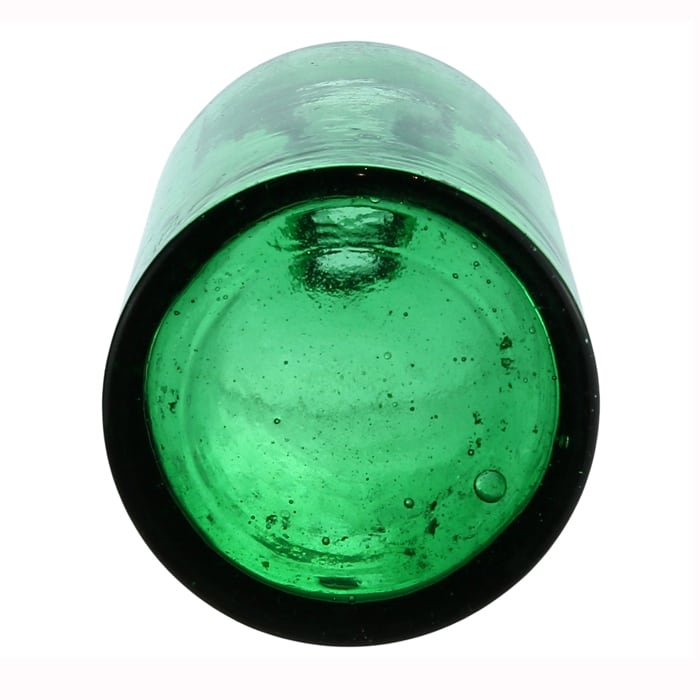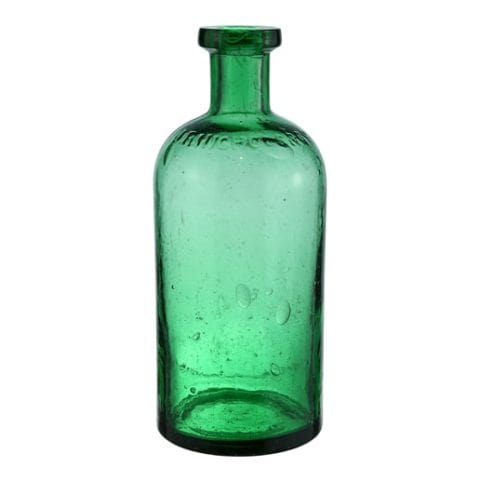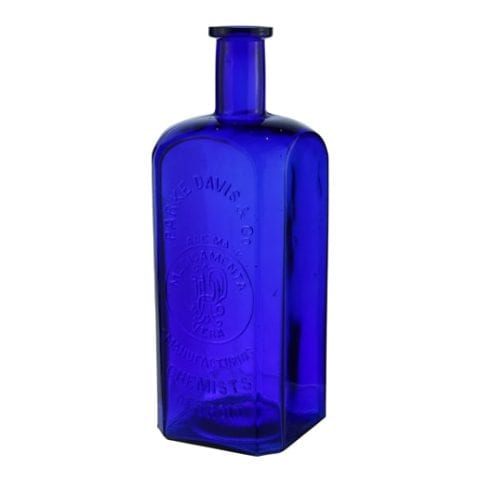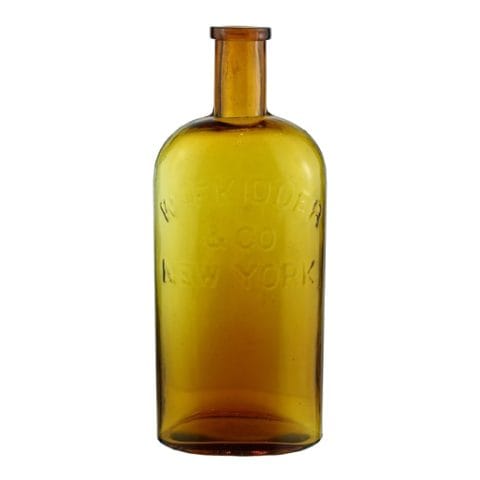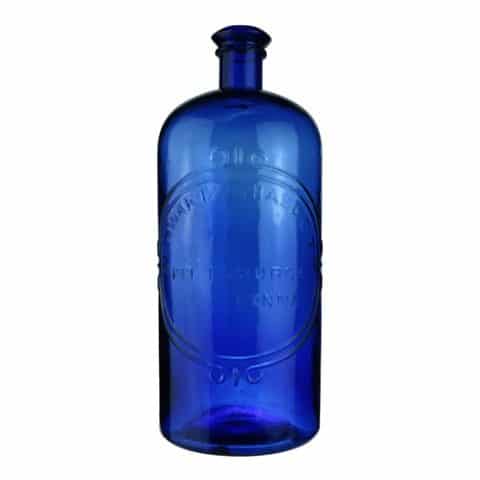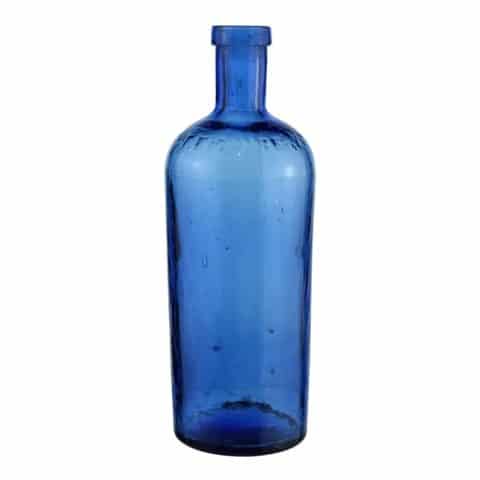J.R. Nichols & Co. Boston
J. R. Nichols & Co.
Boston
Dr. James R. Nichols, Haverhill, Massachusetts
Cylindrical Green Druggist Bottle
Provenance: Brian R. Bingham Collection
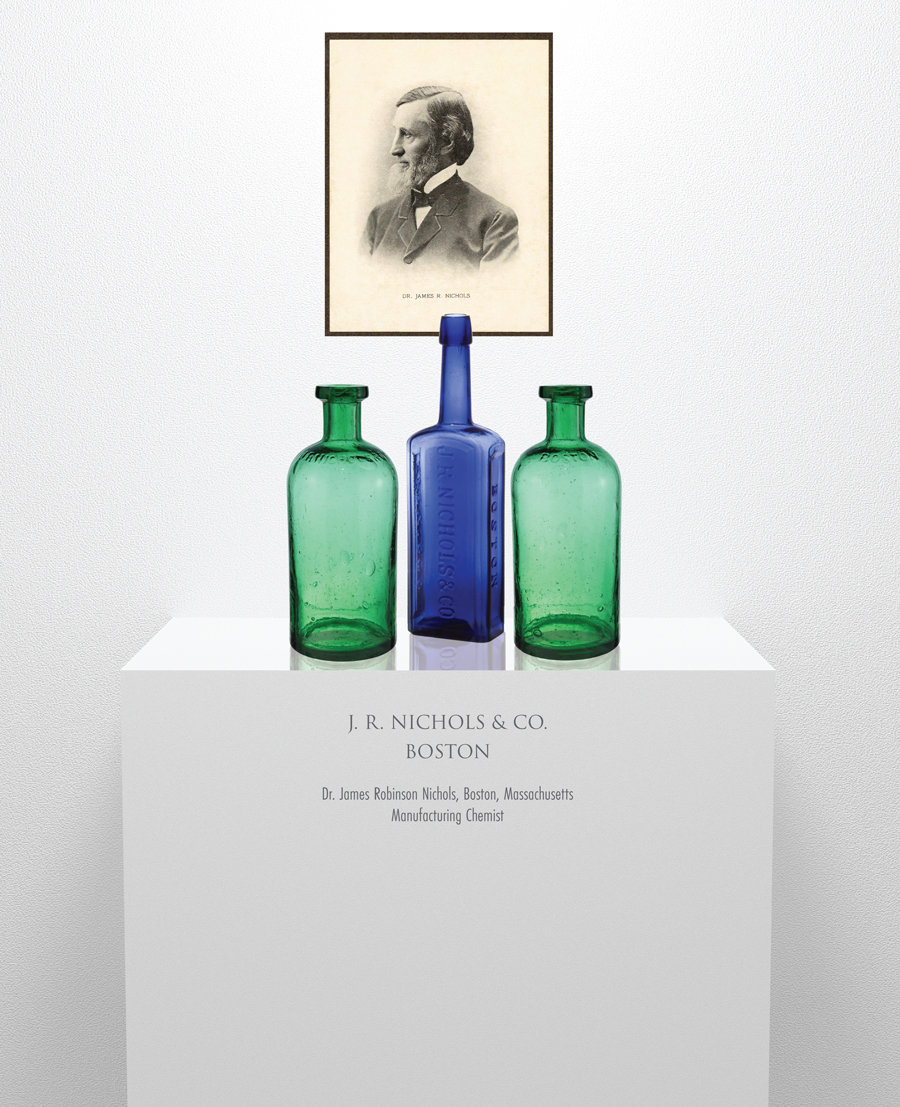
“J. R. Nichols & Co. Boston” bottles are favorites with antique bottle collectors as the bottles are found in nice green and blue glass colors and represent a man who was a very successful doctor, chemist, druggist, author and director of the Boston & Maine Railroad.
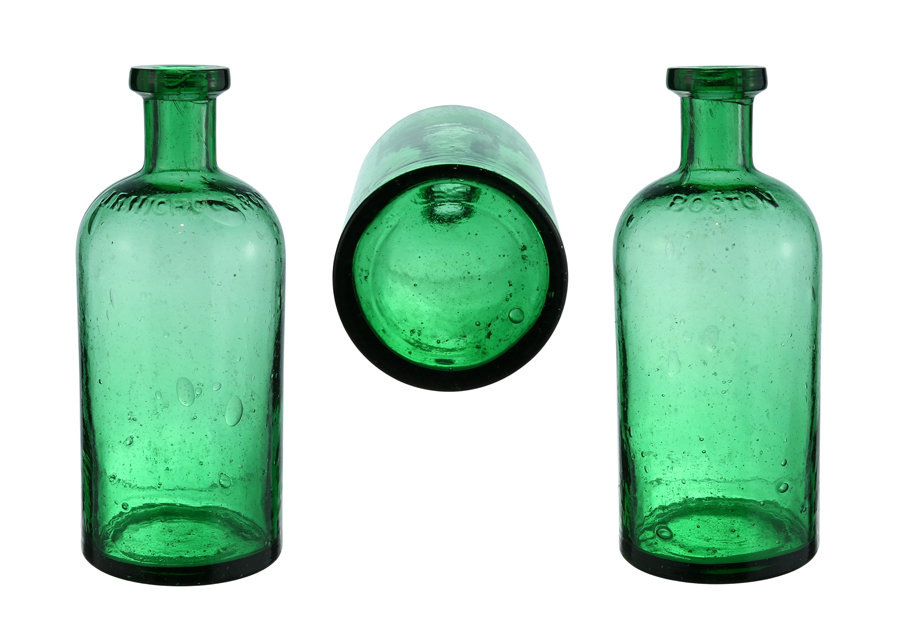
Our feature example is a medium green, 7-inch-tall round 16-ounce medicine bottle embossed ‘J. R. NICHOLS & Co. BOSTON’ on the shoulder. The bottle, with excellent glass character, was featured along with many other colored druggist bottles in the consignor’s exhibit at the FOHBC Reno 2022 National Antique Bottle Convention and on the cover of the November–December 2022 issue of Antique Bottle & Glass Collector.
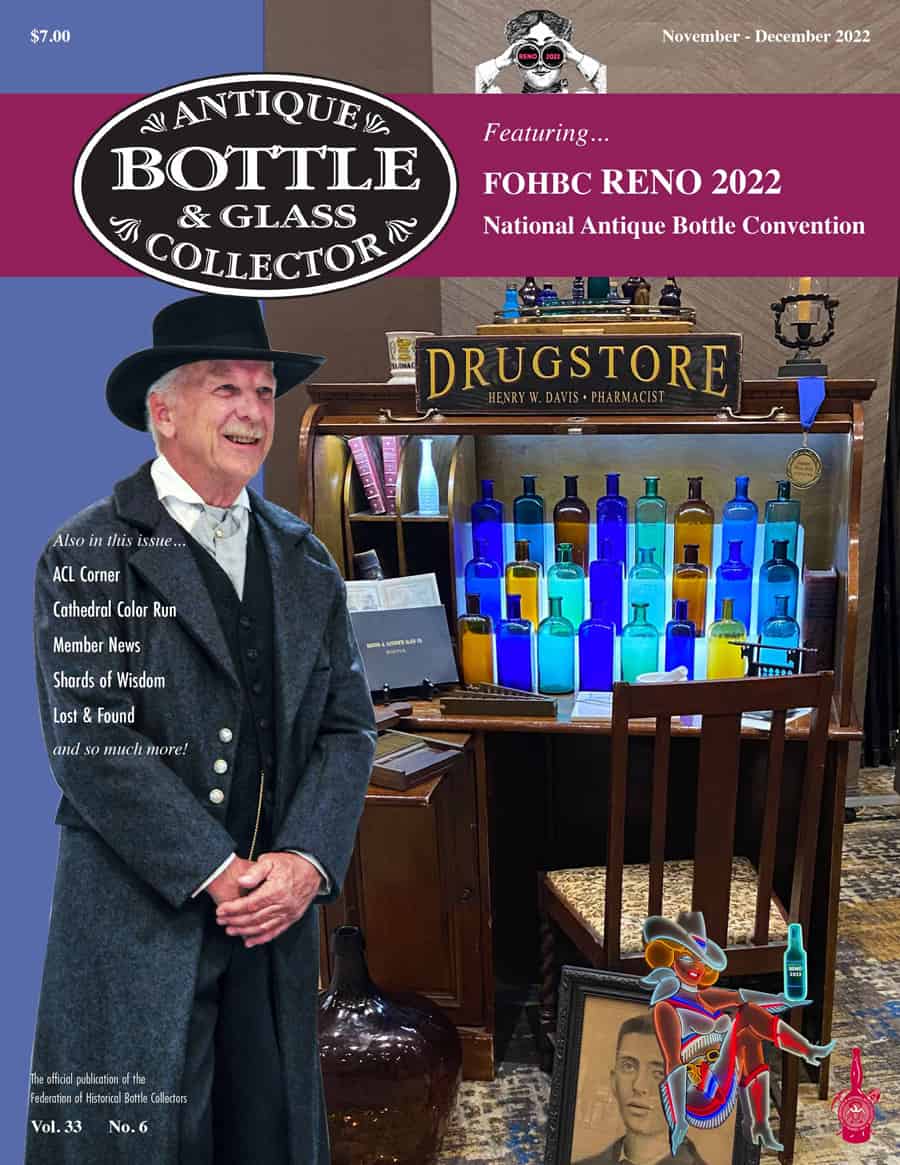
Dr. James R. Nichols
James Robinson Nichols was born on July 18, 1819, in Amesbury, Essex, Massachusetts. He was the son of Stephen Nichols Jr. and Ruth Sargent. In August 1843, J. R. Nichols, age 24, married Harriet B. Porter, age 19, in Haverhill, Massachusetts. She was the daughter of Eleazer Porter and Harriet Brickett. She died five years into the marriage, and in April 1851, J. R. Nichols married Margaret Gale, age 24. A son, Austin Porter Nichols, was born in Haverhill in November 1854. A daughter would follow in 1858.
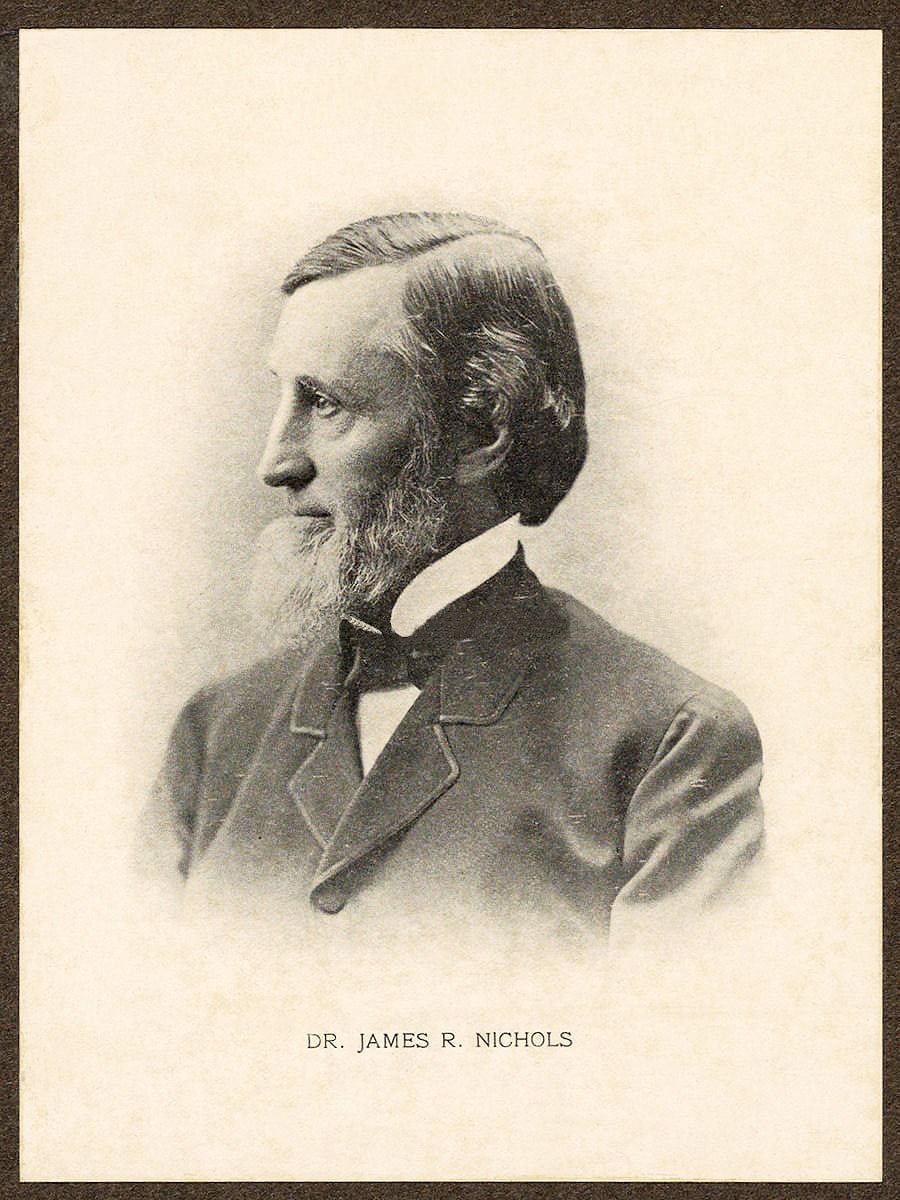
In 1856, J. R. Nichols entered business as James R. Nichols & Company, Manufacturers of Standard and Special Chemicals, located at No. 150 Congress Street in Boston. Nichols would open a laboratory in 1857 with partner Charles E. Billings. In 1865, Albion Robert Clapp became a partner, and the trio was listed together in the July 1866 edition of the Boston Journal of Chemistry and Pharmacy. In 1858, Nichols first appeared in Polk’s Boston Directory listed as a “chemist” at 41 Tremont. The following year, in 1859, he was listed in Polk’s as James R. Nichols & Co., manufacturing chemist, 7 Central.
The 1860 United States Federal Census Return confirms that J. R. Nichols was still living in Haverhill, listed as a chemist with real estate worth $5,000 and personal property worth $1,500. He was again listed in Polk’s with Billings as a partner at 12 Kilby Street. In 1861, Nichols bought the Darling Farm, which sat on a hill overlooking Lake Kenoza, for his chemical fertilizer experiments. By 1863, the company would move from 12 Kilby to 111 Milk.
In 1865, J. R. Nichols began working as the Boston Journal of Chemistry editor. This publication would eventually be called the Boston Journal of Chemistry and Pharmacy. Nichols would continue in that role for 18 years until 1883. That same year, J. R. Nichols would bring on Albion R. Clapp as a partner and move the James R. Nichols & Company to 150 Congress, which would remain until 1872, when he sold his interest in the business.
In the 1870 US Census, Nichols increased his wealth and was still listed with an occupation of “chemist,” with real estate worth $25,000 and personal property worth $75,000.
In 1872, J. R. Nichols visited England and Scotland, enticed by their long-standing stone structures. He returned with the idea of building a summer home from native boulders and rocks. He was quoted at the time as saying, “We desire to prove to farmers and others in a practical way the value of boulder rocks as building materials.” Construction began in 1873 and was completed two years later in 1875. He called the building Winnekenni Castle and the surrounding farm Winnekenni, an Algonquian Native American term for “Very Beautiful.” In 1875, The Haverhill Gazette described the interior of the castle, “The original structure contained a Gothic Door opening up to a spacious Grecian Drawing Room, a Pompeian style dining room, a Roman-tiled, black-walnut finished library, in addition to a kitchen, sleeping room, storeroom, and laundry, spacious stairway opened up to a hall on the second story that had entrances to nine bedrooms and a ‘bathing room.’ There was access to the roof from the largest of the four towers.”
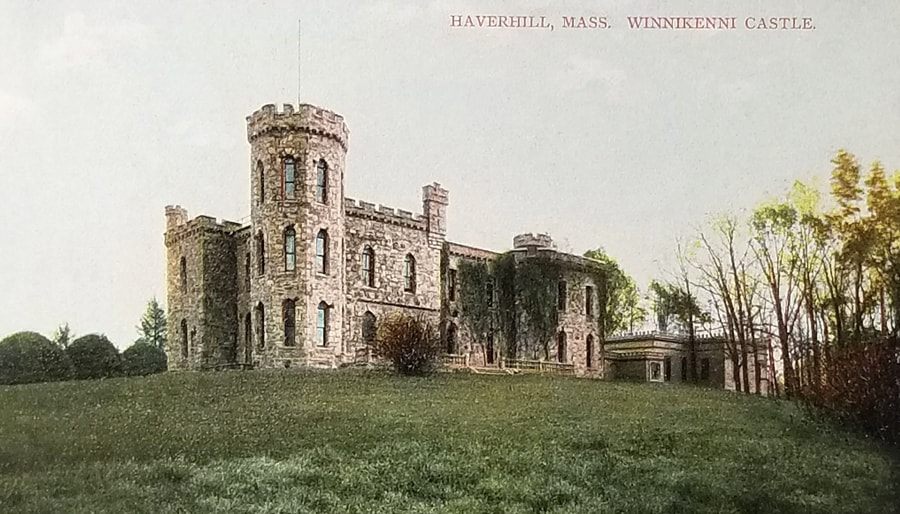
In 1872, J. R. Nichols sold his interest in James R. Nichols & Company to his partners, and the business continued under the firm name of Billings, Clapp & Co.
In 1885, due to poor health, Dr. James Robinson Nichols sold the castle and 27 acres of land to his cousin William Webb of Salem, Massachusetts. On January 2, 1888, at 68, Dr. James R. Nichols died in Haverhill. During his lifetime, he wrote several books, the best known of which “Whence? Where? What?” which made it into its 10th edition. On August 23, 1908, his wife Margaret died in Brookline, Norfolk, Massachusetts. She was age 82.
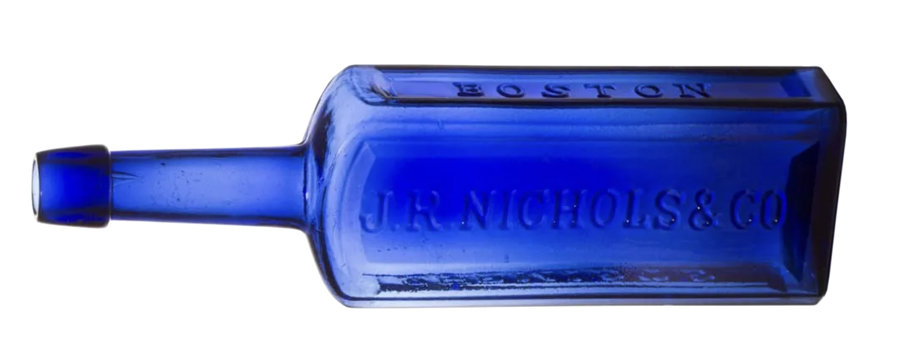
Primary Image: “J. R. Nichols & Co. Boston” bottle imaged by Alan DeMaison at the FOHBC Reno 2022 National Antique Bottle Convention mobile imaging station.
Support: Research by Brian R. Bingham, Oceanside, California
Support Image: Dr. James R. Nichols. Vignetted head and shoulders portrait, profile facing left. He has grey hair and a paler beard and is wearing a suit, shirt and tie. Nichols was a doctor, chemist, author, editor of the Journal of Chemistry and Popular Science News, and director of the Boston & Maine Railroad. He built Winnekenni Castle in Haverhill as a summer home, designed by architect C. Willis Damon. Printed below: “Dr. James R. Nichols.” Photomechanical print of a photograph, from an unidentified publication. Print is 16 x 12 cm mounted on cardboard 36 x 26 cm. Housed with Historical Photographic Print Collection, Haverhill Public Library.
Join the FOHBC: The Virtual Museum is a project of the Federation of Historical Bottle Collectors (FOHBC). To become a member.

